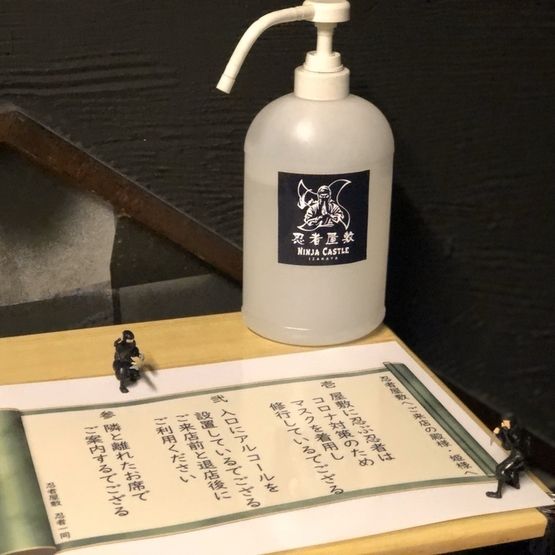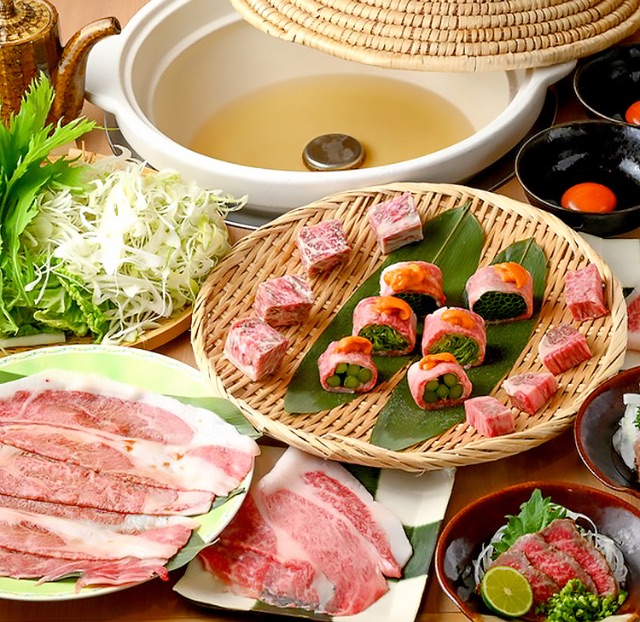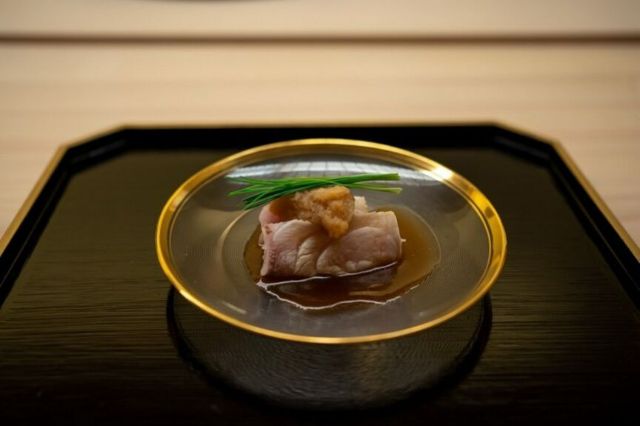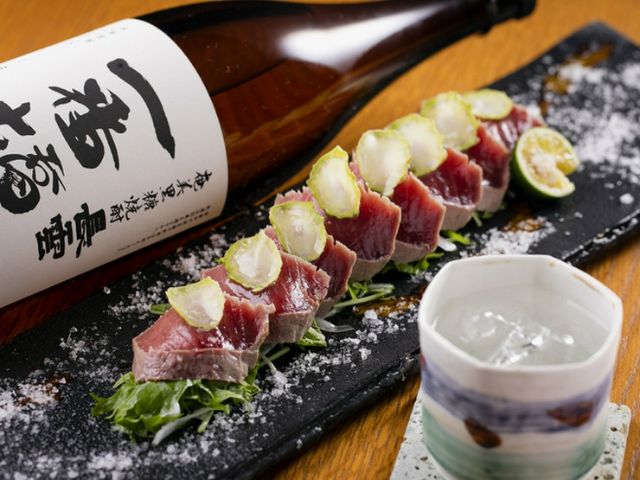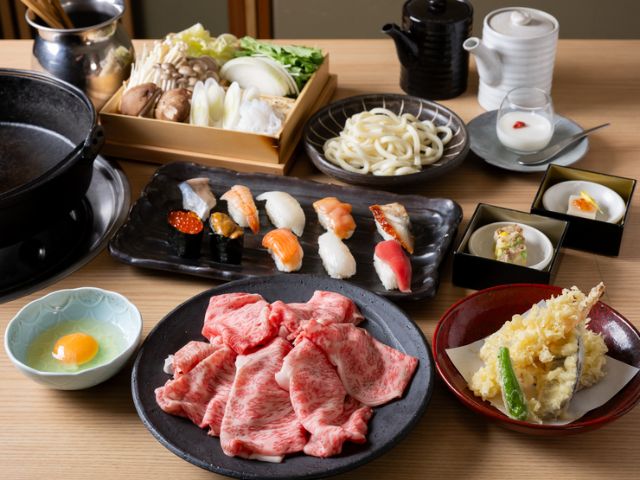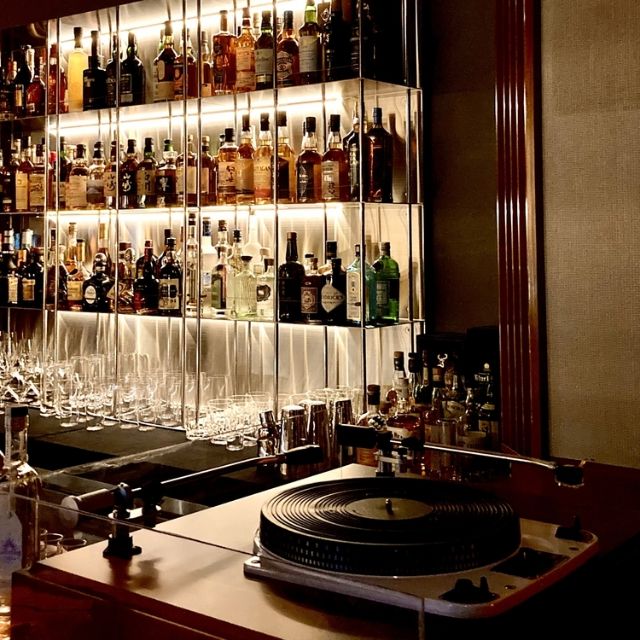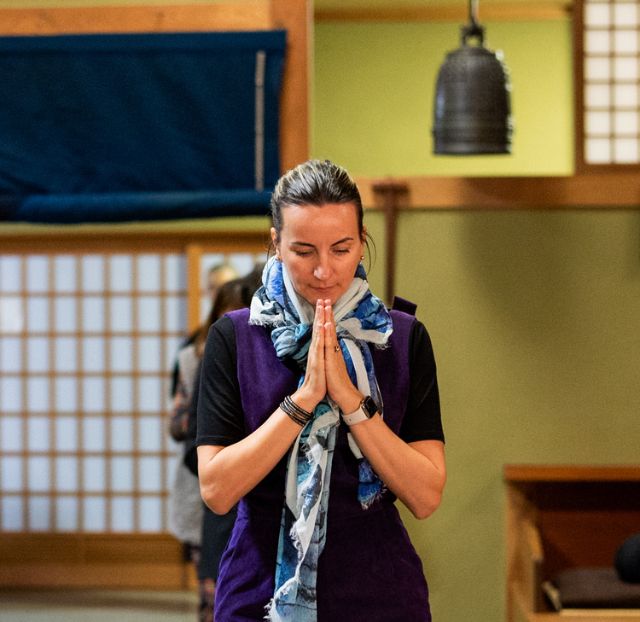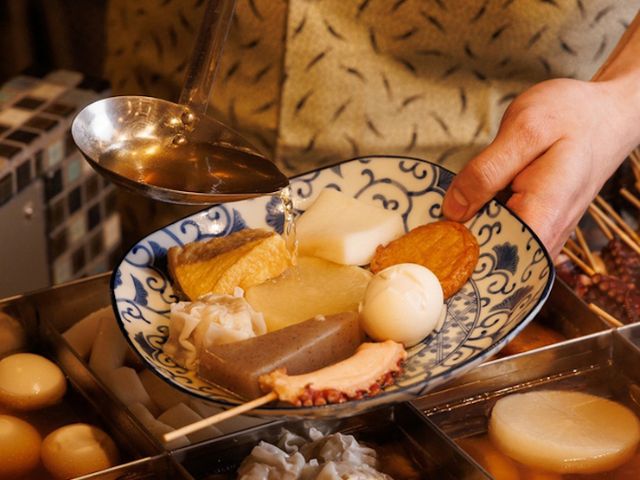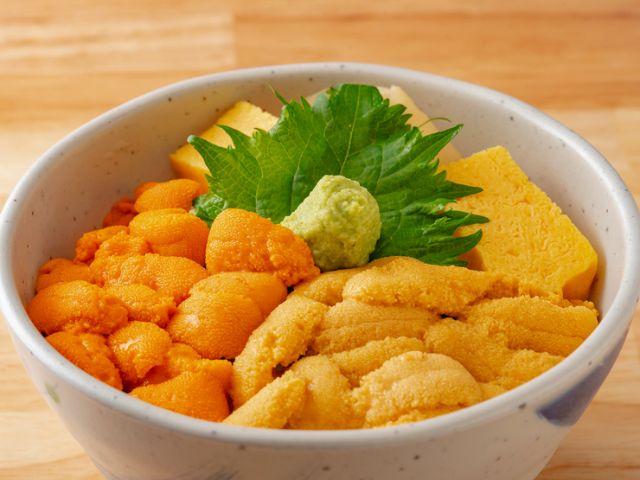Japan's Ultimate Winter Food: The Regional Variations of Oden
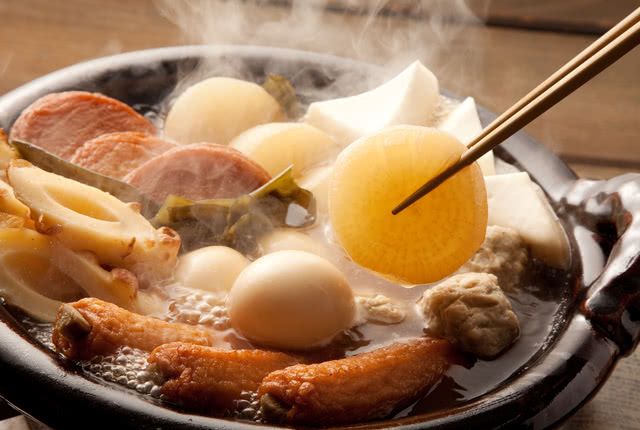
What Is Oden?
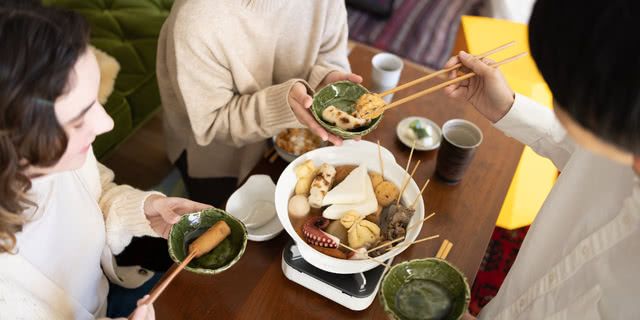
Oden is a pot dish made by cooking a variety of ingredients in dashi made from bonito flakes and kombu (kelp) flavored with seasonings such as soy sauce. Common ingredients are vegetables such as daikon (radish), potatoes, eggs, konnyaku (made from konjac root with a consistency similar to firm jelly), and nerimono (fish paste).
Oden is a popular dish to eat at home, so sets that just need to be heated up are readily available in supermarkets. Warm oden is also sold at convenience stores.
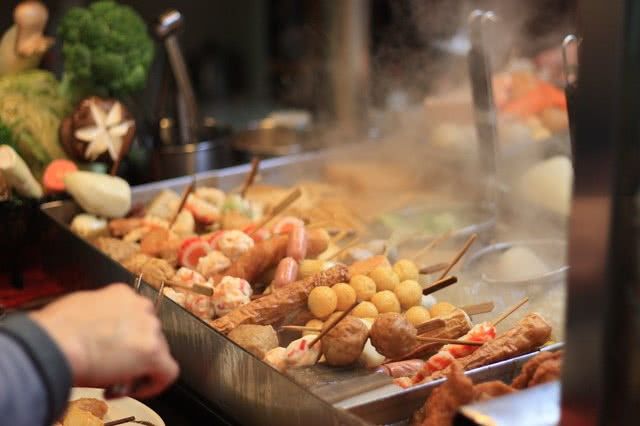
In addition to the common ingredients mentioned earlier, you might also find oden with unusual ingredients such as wiener sausages and more.
Regional Oden Unique to Each Area
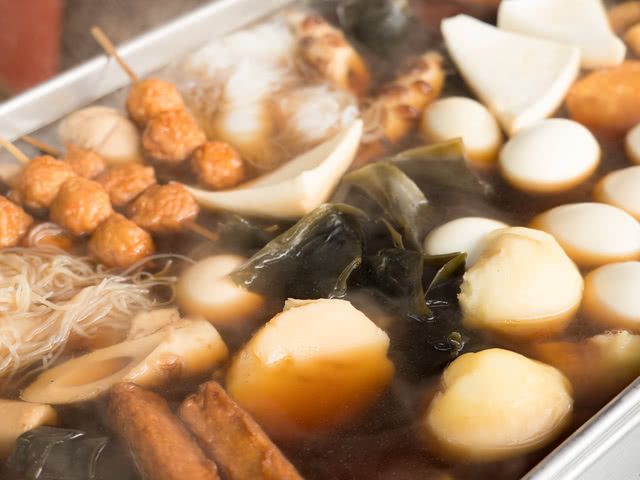
There is actually a wide range of oden available, with both the broth and ingredients varying across the 47 prefectures of Japan.
Here are the typical oden styles from Tokyo, Nagoya, Kanazawa, and Okinawa.
・Tokyo
Tokyo has many long-established oden restaurants serving deeply-seasoned oden in the style of the Kanto region. The broth is made from kombu and bonito flakes and flavored with soy sauce, mirin (sweet cooking sake), and sugar for a deep, salty-sweet flavor. Compared to the Kansai style, the broth is darker.
In addition to the typical oden ingredients, chikuwabu, which is made by kneading flour and salt into a paste and shaping it into a tube, is often included.
・Nagoya
Nagoya City in Aichi Prefecture is located in the center of Japan and is a major city following Tokyo and Osaka. Indispensable to food in Aichi Prefecture is a reddish brown miso called mame miso, made from soybeans. Mame miso can be fermented for as long as two to three years and is distinguished by its rich flavor, acidity, and unique bitterness.
The oden in Nagoya is seasoned with this miso, giving it a rich, deep flavor. Ingredients are either cooked in a sauce and dipped in mame miso or cooked in a sauce flavored with mame miso.

・Kanazawa
The oden in Kanazawa City, Ishikawa Prefecture, which is on the Sea of Japan and has access to plentiful fresh seafood, is distinguished by its clear soup. The soup uses an umami-rich dashi stock made from kombu and seafood and has a slightly sweet, gentle flavor that is pleasant to the palate.
The oden in Kanazawa tends to have a variety of ingredients that are unique to the city. There is kurumafu (a food made from flour in the shape of a ring), baigai (a small sea snail), and the winter specialty kanimen, which is crab meat stuffed in its shell.
・Okinawa
While oden is considered a winter food in most parts of the country, it is also popular in the tropical islands of Okinawa, where the temperature rarely drops below 15°C even in the middle of winter. Oden goes well with sake and is appreciated by Okinawans, who are considered to be cheerful people who enjoy their drink.
The oden in Okinawa has unique ingredients that reflect the local food culture. The star of Okinawa's oden is pork, including pigs feet that are soft, plump, and packed with collagen, along with spare ribs and sausages. Okinawan oden also has leafy vegetables, such as lettuce, which are rarely seen in other prefectures.
Recommended Restaurants to Enjoy Outstanding Oden
Azabu Shu (Azabu-juban)
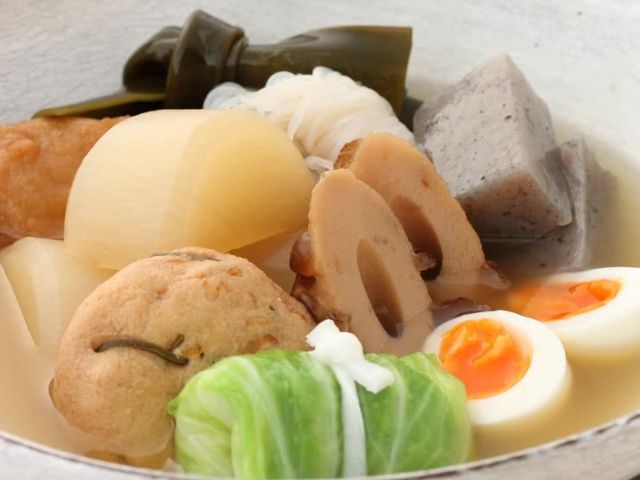
Azabu Shu is a Japanese restaurant that procures the best ingredients every day and crafts dishes that maximize their flavors.
Its signature [Oden] is served year-round, but other menu items change by season. The clear, Kyoto-style broth is made from five different dried fish flakes, such as bonito and mackerel, and boasts the rich flavors of seafood.
Ingredients include standards such as [Daikon] (330 JPY), [Hanpen] (processed white fish meat) (330 JPY), and [Konnyaku] (330 JPY), as well as unusual additions like [Yuba] (tofu skin from heated soymilk) (550 JPY), [Sugar-Rich Tomatoes From Shizuoka] (550 JPY), and [Rolled Cabbage] (meat-based filling wrapped in cabbage) (550 JPY).
Guests who want to enjoy Japanese cuisine to the fullest should try a course meal, like the [Fresh Seasonal Fish and Shu Oden Course] (11,000 JPY) or the [Sendai Kampo Wagyu Steak, Fresh Seasonal Fish, and Oden Course] (16,500 JPY).
Both feature a variety of appetizers, simmered dishes, grilled dishes, and oden, making them very satisfying.
All prices include tax.
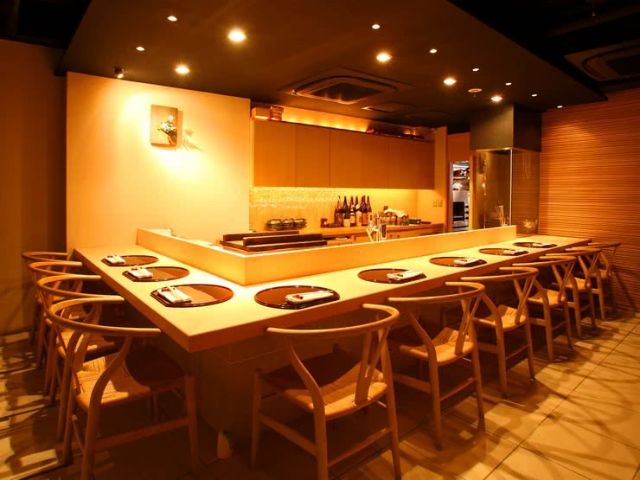
While Azabu Shu is a Japanese restaurant, it offers a wide selection of wines ranging from standard to organic. White wine goes particularly well with oden and Japanese cuisine in general.
The restaurant is decorated elegantly in a classic, minimalist Japanese style with warm wooden tones and beige colors. Guests can even dine in a private room while admiring the restaurant's elegant small garden.
Azabu Shu
Closed: None
Average price: [Dinner] 8,000 JPY
Access: A two minute walk from exit 1 of Azabujuuban Station's Namboku Line. The serene black walls will be your landmark.
Address: Takeda Bldg. , 2-12-8 Azabujuban , Minato-ku, Tokyo Map
More Details Reservation
Robata to Oden Kyosuke Shinbashi Branch (Shinbashi)
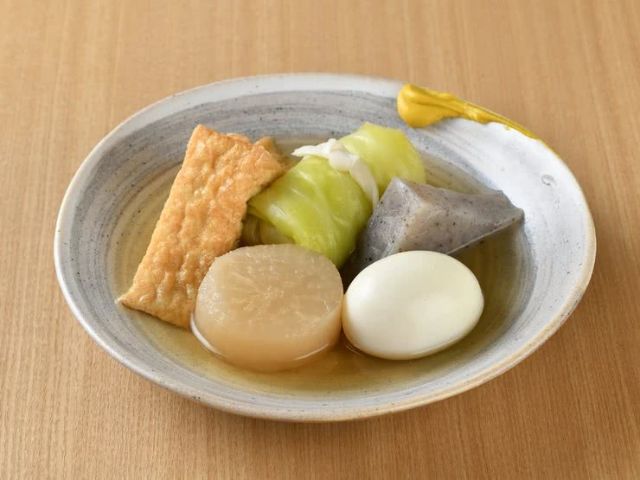
In addition to the standard white [Hanpen] (275 JPY), guests can savor the [Black Hanpen] (308 JPY), made by grinding a whole fish into paste. If you're having Hanpen for the first time, be sure to try both.
You can also order robatayaki, which is where seafood, meat, and vegetables are grilled over high-quality binchotan charcoal. Sit at the counter to bask in the appetizing aromas and crackling sounds. Try the [Robatayaki 6 Pieces Set] (968 JPY), a reasonably priced assortment of chargrilled skewers including sirloin steak beef, squid, eggplant, and more.
*All prices include tax.
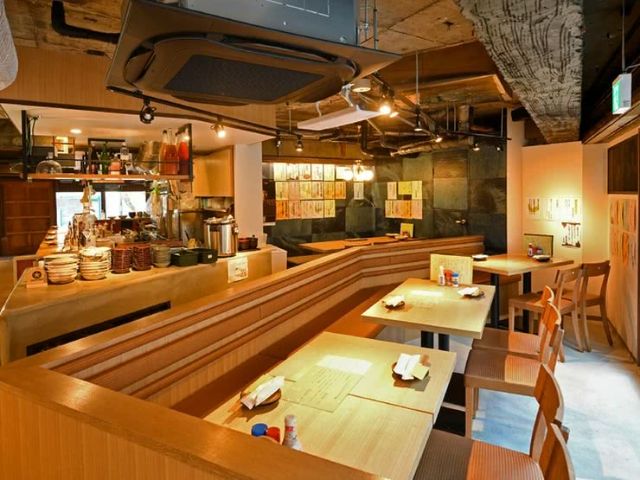
Customers in the terrace are also served a robatayaki appetizer that you grill yourself.
Robata to Oden Kyosuke Shinbashi Branch
Closed: Sunday
Average price: [Dinner] 3,000 JPY / [Lunch] 1,000 JPY
Access: 1-minute walk from Karasumori Exit of Shimbashi Station on JR Yamanote Line. 110m from Shimbashi Station.
Address: Shinhana Bldg., 3-21-11, Shimbashi, Minato-ku, Tokyo Map
More Details Reservation
Disclaimer: All information is accurate at time of publication.
Thank you for reading our article.
Our goal is to take your culinary journey to the next level by helping you find the best restaurant. With SAVOR JAPAN, you can search and make reservations for
the Japanese Cuisine restaurants found in and around Tokyo that fill your needs.
Discover more Japanese Cuisine restaurants by area
- Tokyo Area
- Near Tokyo
- Kyoto and Osaka Area
- Hokkaido Area
- Northern Honshu (Tohoku)
- Central Honshu (Chubu)
- Western Honshu (Chugoku)
- Shikoku
- Kyushu
- Okinawa and Ryukyu Islands
Discover more restaurants to eat Japanese Cuisine by area
Related Articles
New Articles
Categories
Cuisine
- Bars (23)
-
Japanese Cuisine (676)
- Kaiseki (45)
- Nabe (19)
- Okonomiyaki (24)
- Shabu Shabu (36)
- Soba (17)
- Sushi (137)
- Tempura (18)
- Teppanyaki (46)
- Shojin Ryori (3)
- Tonkatsu (12)
- Kushiyaki (10)
- Yakitori (46)
- Sukiyaki (35)
- Japanese Cuisine (341)
- Oyster (2)
- Sashimi/ Seafood (19)
- Unagi (eel) (30)
- Motsu Nabe (offal hotpot) (6)
- Mizutaki (chicken hot pot) (3)
- Oden (8)
- Kaisendon (seafood bowl) (9)
- Udon (2)
- Taverns(Izakaya) Cuisine (125)
- Western Cuisine (42)
- Italian/French Cuisine (95)
- Yakiniku/Steak (225)
- Chinese Cuisine (26)
- Ramen (Noodles) Cuisine (26)
- Cafe/Sweets (60)
- Other Asian Cuisine (5)
- Global/International Cuisine (7)
- Alcohol (45)
- Other (11)
Area
- Shikoku (10)
- Kyoto and Osaka (345)
-
Tokyo (460)
- Tokyo (286)
- Ginza (44)
- Roppongi (22)
- Shibuya (26)
- Shinjuku (47)
- Asakusa (20)
- Ebisu (12)
- Tsukiji (10)
- Tokyo Landmarks (4)
- Ueno (24)
- Akihabara (9)
- Ikebukuro (12)
- Jiyugaoka, Denenchofu, Nakameguro (9)
- Shimokitazawa (4)
- Kichijoji (3)
- Tachikawa (1)
- Omotesando, Harajuku, Aoyama (18)
- Akabane (1)
- Kagurazaka (4)
- Akasaka (10)
- Odaiba (1)
- Tsukishima, Harumi, Toyosu (3)
- Near Tokyo (100)
- Okinawa and Ryukyu Islands (58)
- Hokkaido (124)
- Northern Honshu (Tohoku) (31)
- Central Honshu (Chubu) (144)
- Western Honshu (Chugoku) (32)
- Kyushu (92)
Archives
- December 2025(9)
- November 2025(4)
- October 2025(3)
- September 2025(6)
- August 2025(11)
- July 2025(19)
- June 2025(18)
- May 2025(34)
- April 2025(43)
- March 2025(30)
- February 2025(36)
- January 2025(26)
- December 2024(69)
- November 2024(31)
- October 2024(15)
- September 2024(39)
- August 2024(65)
- July 2024(31)
- June 2024(54)
- May 2024(61)
- April 2024(28)
- March 2024(31)
- February 2024(42)
- January 2024(32)
- December 2023(20)
- November 2023(5)
- October 2023(11)
- September 2023(7)
- August 2023(18)
- July 2023(8)
- June 2023(8)
- May 2023(18)
- April 2023(15)
- March 2023(1)
- January 2023(1)
- April 2022(2)
- March 2022(2)
- February 2022(1)
- January 2022(1)
- July 2021(1)
- March 2021(1)
- February 2021(1)
- December 2020(1)
- October 2020(1)
- September 2020(2)
- August 2020(10)
- July 2020(6)
- June 2020(9)
- May 2020(11)
- April 2020(8)
- March 2020(8)
- February 2020(13)
- January 2020(9)
- December 2019(24)
- November 2019(8)
- August 2019(14)
- July 2019(15)
- June 2019(18)
- May 2019(17)
- April 2019(16)
- March 2019(22)
- February 2019(22)
- January 2019(26)
- December 2018(34)
- November 2018(40)
- October 2018(32)
- September 2018(11)
- August 2018(8)
- July 2018(6)
- June 2018(9)
- May 2018(10)
- April 2018(21)
- March 2018(74)
- February 2018(39)
- January 2018(26)
- December 2017(60)
Keywords
- Omakase
- Accessible
- Affordable
- All-You-Can-Eat
- Amazing Scenery
- anime
- Art
- Autumn
- Awards
- Beer Gardens
- Breakfast
- Chef Recommendations
- Cherry Blossoms
- Chinese
- Close To Station
- Condiments
- Counter
- Coupon
- Crab
- Culture
- Dassai
- Dates
- delivery
- Early Summer
- Editor's Recommendation
- English Available
- Event
- Expo
- Fall Leaves
- Family-Friendly
- Famous Restaurant
- Famous Tourist Spot
- Fast Food
- festival
- fireworks
- Flower Farm
- Free Wi-Fi
- French
- Great Location
- Guide
- Hibachi
- hotpot
- How To
- hydrangea
- Hygiene
- Illumination
- Italian
- Izakaya
- Japanese
- Japanese alcohol
- jingisukan
- Kaiseki
- Kappo
- Kushiage
- Kushikatsu
- Kyoto
- Late-Night
- Lunch
- Manners
- matsusakagyu
- Michelin
- mizutaki
- Model Course
- monjayaki
- motsunabe
- Mt.Fuji
- Multilingual Menus
- Nabe
- Narita Airport
- New Year
- Ninja
- Noodle
- Oden
- Okonomiyaki
- omotenashi
- Onsen
- Osaka
- Osaka Station
- Photogenic Site
- pizza
- PR
- Private Room
- Ramen
- ranking
- Recipe
- Regional Cuisine
- Resort
- Rice Bowl Dish (Donburi)
- sacred places
- Sake
- Sakura
- Sashimi
- sea urchin
- Setouchi Area
- Shabu Shabu
- sightseeing
- Signature Dish
- Soba
- Solo Diners Welcomed
- Spicy Food
- Spring
- Steak
- Summer
- Sunflower
- Sushi
- takeout
- Teppanyaki
- Terrace Seating
- Tokyo
- Tokyo Experiences
- Tokyo Skytree
- Tokyo Tower
- unagi
- UNESCO
- Vegan
- Vegetarian
- Wagyu
- What Popular Gourmet Sites Recommend
- Whisky
- Wine Bar
- Winter
- Wisteria
- Workshop
- World Heritage Site
- World Writers
- Yakiniku
- Yoshoku
- Yuba
- Zen
Discover Restaurants By Area
-

Tokyo Area
Japan's largest city, Tokyo, is the center of culinary culture in Japan. Countless Tokyo restaurants serve every kind of food imaginable and the Toyosu fish market keeps restaurants stocked with the nation's finest fish.
-

Near Tokyo
Coastal areas, mountains and valleys surrounding Tokyo are bursting with tourist destinations, such as hot springs and ski slopes, where many unique foods are only available locally.
-

Kyoto and Osaka Area
The cities of Kyoto and Osaka, together with their surrounding areas, have greatly influenced Japan's culinary culture since the 7th Century. The region is renowned for its entertainment, Kobe beef, and wide-ranging traditional dishes.
-

Hokkaido Area
The island of Hokkaido is home to wide-ranging produce of the finest quality, such as rice, meat, vegetables, fish and fruit. Popular dishes from Hokkaido include robatayaki (food slowly roasted on skewers) and Sapporo miso ramen.
-

Northern Honshu (Tohoku)
The northern end of Japan's main island, Honshu, is renowned for its seasonal fruit and vegetables, nation-leading harvest of fish (especially tuna from Ohma), and delicious beef from Yonezawa, Sendai and Yamagata.
-

Central Honshu (Chubu)
Chubu is in the center of Japan's main island, Honshu, and its culinary culture reflects its position between Japan's western and eastern halves. Delicious Hida beef, world-famous Mount Fuji and many acclaimed sake breweries are in Chubu.
-

Western Honshu (Chugoku)
Chugoku, on the southwest of Japan's main island, is rich with diverse produce. Many of its products are praised as Japan's best, including Matsuba crabs from Tottori and oysters from Hiroshima. Its pears and muscats are also top grade.
-

Shikoku
The mild climate of Shikoku is ideal for growing citrus fruit such as sudachi. Shikoku is also famous for Sanuki udon noodles, huge yields of tiger prawn from Ehime Prefecture and the best torafugu (tiger globefish) in the country.
-

Kyushu
Western culture was first introduced to Japan through Kyushu, Japan's third largest island, where the influence of Portuguese and other western cuisine influenced the creation of a colorful culinary tradition.
-

Okinawa and Ryukyu Islands
Okinawa, Japan’s southernmost prefecture, is a treasure trove of distinctive dishes and drinks that have become popular throughout Japan, including Okinawa soba, unique sushi toppings and Awamori distilled liquor.
